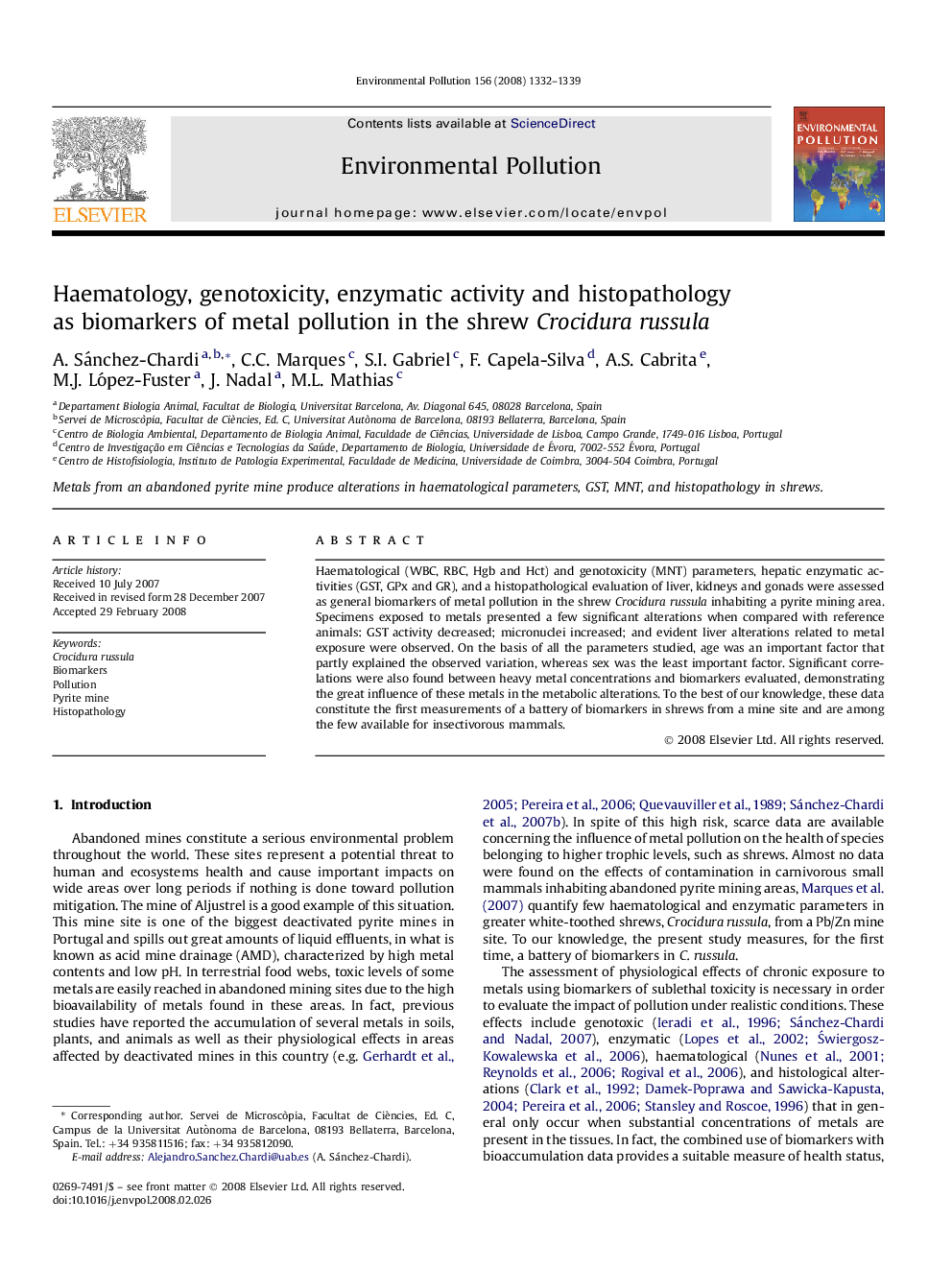| Article ID | Journal | Published Year | Pages | File Type |
|---|---|---|---|---|
| 4426281 | Environmental Pollution | 2008 | 8 Pages |
Haematological (WBC, RBC, Hgb and Hct) and genotoxicity (MNT) parameters, hepatic enzymatic activities (GST, GPx and GR), and a histopathological evaluation of liver, kidneys and gonads were assessed as general biomarkers of metal pollution in the shrew Crocidura russula inhabiting a pyrite mining area. Specimens exposed to metals presented a few significant alterations when compared with reference animals: GST activity decreased; micronuclei increased; and evident liver alterations related to metal exposure were observed. On the basis of all the parameters studied, age was an important factor that partly explained the observed variation, whereas sex was the least important factor. Significant correlations were also found between heavy metal concentrations and biomarkers evaluated, demonstrating the great influence of these metals in the metabolic alterations. To the best of our knowledge, these data constitute the first measurements of a battery of biomarkers in shrews from a mine site and are among the few available for insectivorous mammals.
